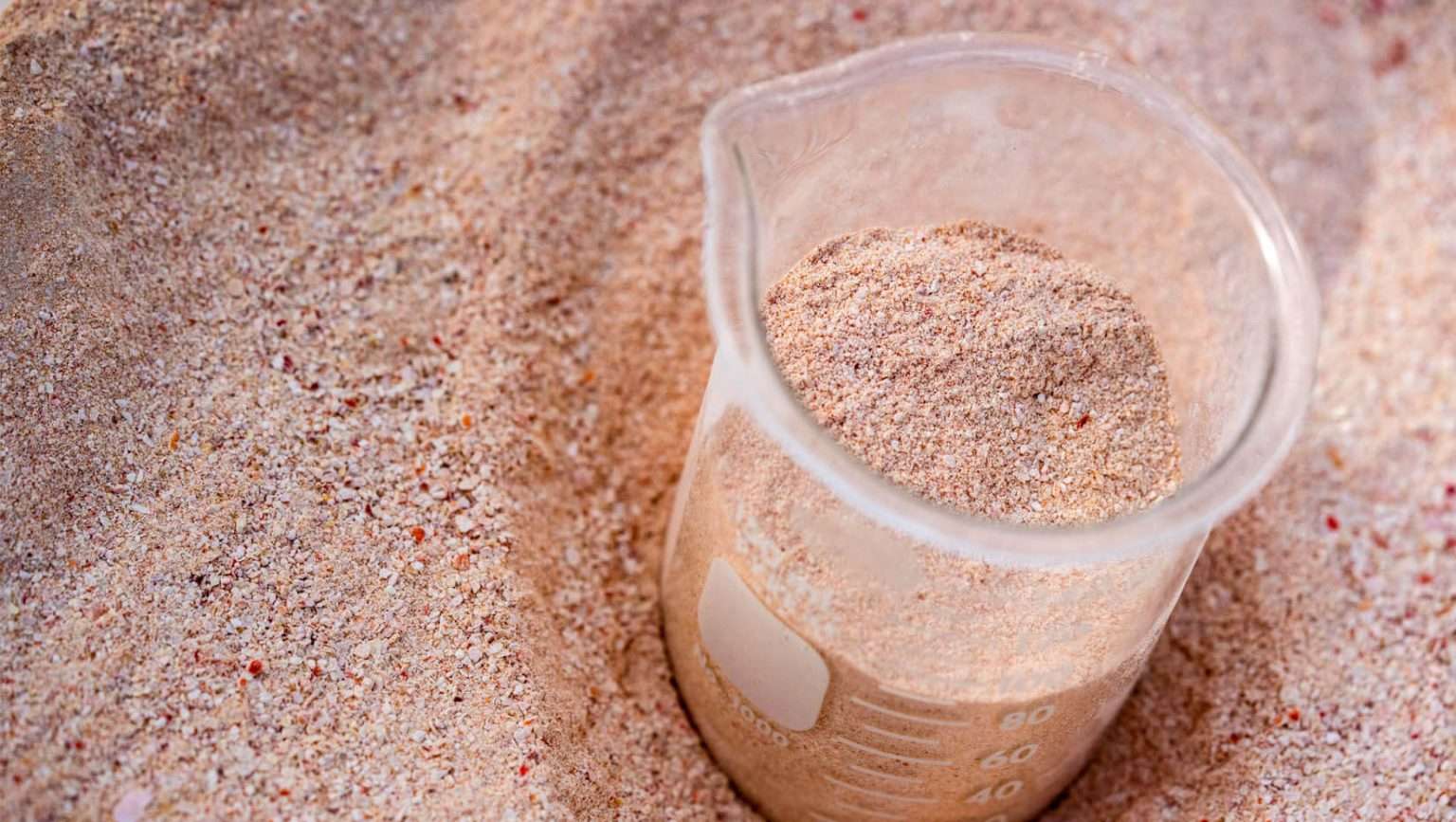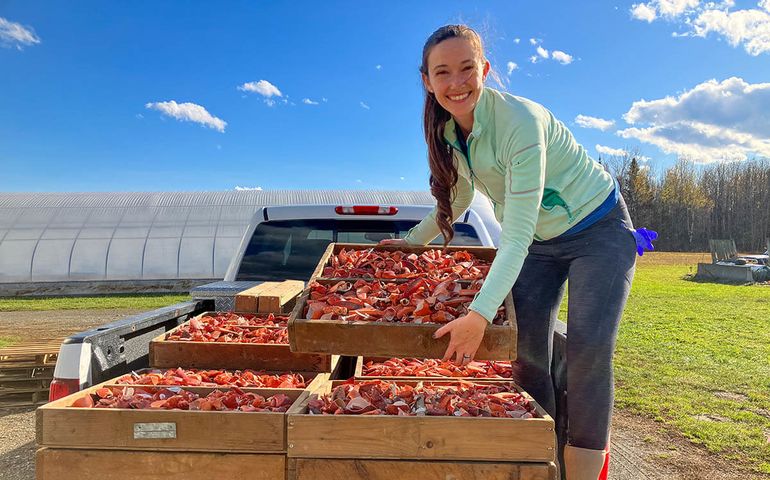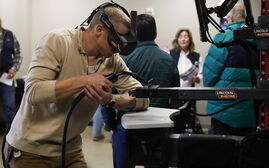
From shells to spuds: UMaine using lobster by-product to fight potato pathogens
 Courtesy / University of Maine
Katie Ashley, a UMaine plant science Ph.D. student, is studying the use of powdered lobster shell as a soil amendment to prevent soil disease in the potato industry. She’s seen here at Aroostook Farm, UMaine's potato research farm in Presque Isle.
Courtesy / University of Maine
Katie Ashley, a UMaine plant science Ph.D. student, is studying the use of powdered lobster shell as a soil amendment to prevent soil disease in the potato industry. She’s seen here at Aroostook Farm, UMaine's potato research farm in Presque Isle.
Can powdered lobster shells prevent potato disease? Scientists at the University of Maine are evaluating a novel shell-to-spud combination that could connect two cornerstones of Maine’s food system.
Working in the lab of Associate Professor Jianjun Hao, Katie Ashley, a plant science Ph.D student, is assessing how different concentrations of cooked, dried and ground lobster shells could cultivate beneficial microbes that ward off potato pathogens in the soil.
“This presents an opportunity to connect the potato and lobster industries and utilize shellfish by-products which would otherwise enter the waste stream,” Ashley said in a news release.
The concept could provide a new market for byproducts of the lobster industry.
“This research has the very real potential to turn a waste stream into a revenue stream for Maine's lobster industry, while at the same time helping to increase the value of another iconic Maine product: the potato,” said Curt Brown, a marine biologist at Saco-based seafood supplier and processor Ready Seafood.
Ready Seafood and Luke's Lobster in Portland provided lobster shells for the study.
According to the Maine Department of Marine Resources, the industry in 2021 landed 100 million pounds. Brown estimated that shells account for 25% of a lobster's weight. Nearly half of Maine’s catch is processed rather than sold live, and those shells are largely destined for landfills.
In addition to disease resistance, Ashley’s team is tracking soil microbial communities, overall crop yield and plant emergence, vigor, biomass and height.

Potatoes are Maine’s top agricultural commodity, with a value of more than $215 million in 2021, according to a National Agricultural Statistics Service report. But the crop is susceptible to soilborne diseases. Early potato dying syndrome, a fungal pathogen present in Maine, can decimate as much as half of a crop in severely affected fields.
The shell ingredient of interest is chitin, which comprises 75% of lobsters’ exoskeletons and provides structural support. Chitin is also present in fungal and bacterial pathogens. Some naturally occurring soil microbes specialize in breaking down the compound. Ashley hypothesizes that adding chitin-rich shells in the fall could cultivate beneficial microbial communities, creating a line of defense against soil-borne pests.
Chitin from other types of shellfish is already part of integrated pest management programs on farms in South Korea, Japan and California; Ashley’s study is the first to use lobster shell applied to potatoes.
Field-scale trial
The team completed a greenhouse trial with 90 plants on UMaine’s campus this fall. A field-scale trial in the 2023 growing season will compare plots with different concentrations of chitin, compost and chemical fumigation at Aroostook Farm in Presque Isle.
Lobster shell can also be used as fertilizer, and that’s not a new concept. In Ashley’s study, preliminary results indicate the shell amendment benefits aboveground plant growth by an average of 200%. It’s expected the study could provide data that supports the use of shell fertilizer in a broader market.
Hao is a co-principal investigator on the project.
“Soil microorganisms are the key to improve soil quality and can be measured as an indicator of soil health,” Hao said. “These beneficial microorganisms are highly driven by soil amendments such as crops, plant residues, animal manures and, in this case, lobster shell meal.”
If successful, Ashley’s approach could provide an alternative disease control practice for Maine potato growers. Chemical inputs are the largest operating expense for the state’s growers, according to a 2008 report from the Maine Potato Board. Some, like chlorothalonil, which has been used since the early 1970s to control late blight, have been the subject of increasing scrutiny and regulation.
“Reducing the reliance on pesticides for disease management in favor of enhancing microbial soil ecology could benefit both agriculture and the environment,” Ashley said.
Ready Seafood’s record of partnering on UMaine research projects includes the American Lobster Settlement Index and exploring techniques to accelerate the shell-hardening process in recently molted lobsters.













0 Comments